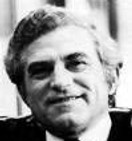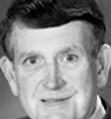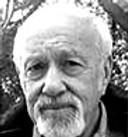The Mainframe Hall of Fame

Gene Amdahl was the chief architect of the System/360 that was announced in April 1964. He left IBM in 1970 and then founded the Amdahl Corporation to produce mainframe-compatible computer systems.

Bob Bemer helped to invent COBOL and he coined the terms “COBOL” and “CODASYL”. He also helped to define the ASCII text standard and was the first scientist to warn of the Y2K problem.

Aubrey Chernick founded Candle Corporation in 1976 and created OMEGAMON, the first-ever real-time application for monitoring MVS system performance.

Mike Cowlishaw designed and implemented the REXX high-level programing language while at IBM in 1979. He also designed and implemented NetREXX. He is an IBM Fellow.

Lou Gerstner became CEO of IBM in April 1993 at a time when the company was in serious trouble after basically owning the computer market for more than four decades. In his nine years at the helm he led an amazing turnaround of IBM that ultimately resulted in the resurgence of the mainframe.

Don Haderle led the team that created the database code named EAGLE. EAGLE evolved into the amazingly successful DB2 with first customer shipments starting in 1983. He is an IBM Fellow.

Watts Humphrey was named the head of all software at IBM for the System/360 and director of all programming from 1959 to 1986. He also led the IBM software team that introduced the first software license. He holds five U.S. patents.

Anthony (Tony) Mazzone is the founder of Innovation Data Processing and the author of Fast Dump Restore (FDR), the first disk backup product offered by an independent software vendor and now installed in most z/OS mainframe shops worldwide. He is also the author of FDRERASE, the only US Government certified solution for secure erase of mainframe (z/OS) disks.

Jeff Nick was the lead architect for the S/390 z-series platform and he was the leading technical expert on S/390 Parallel Sysplex. In 2001 he was honored as an IBM Fellow.

Ben Riggins was an IBM systems engineer at Virginia Electric Power Co. in 1969 when he came up with the idea for the online teleprocessing system we now know as CICS. He is often considered to be the “Father of CICS.”

Barry Schrager was the designer and primary author of the data security software product known as ACF2 in 1978. An amazing success, ACF2 has since generated more than $1 billion in revenue.

Cheryl Watson has been sharing her extensive knowledge of MVS performance analysis and capacity planning since 1965 as a consultant, teacher, and author of Cheryl Watson's Tuning Letter.

Lynn Wheeler has been a major contributor to z/VM's success since his early days as the author of numerous enhancements to CP and CMS including the renowned "Wheeler Scheduler".

Bob Yelavich was very active with the introduction of the System/360 in 1964. After that he spent the rest of his career working with CICS. If Ben Riggins was the “Father of CICS” then, Bob was the “Godfather of CICS”. He was also the publisher of the cleverly titled newsletter, “Follow the Yelavich Road”.

H. Pat Artis is a well-known expert in workload characterization, forecasting, simulation modeling, I/O subsystem design and capacity planning. He received the A. A. Michelson Award for his fundamental contributions to computer metrics is the co-author of the book MVS I/O Subsystems: Configuration Management and Performance Analysis.

Tom Beretvas became IBM’s first MVS performance manager in 1971. He also became chairman of the Data Storage Architecture Board which designed the blueprint for what later became DFSMS.

Pete Clark was instrumental in causing IBM to reverse their plans in the late 1980s to phase out VSE in favor of the MVS operating system. He wrote and distributed more than 14,000 copies of a patch that extended VSE’s address space limitations and founded WAVV, the World Alliance of VSE, VM, and Linux.

Bob Evans had the overall management responsibility for development of the System/360 mainframe in the 1960s. President Ronald Reagan honored him with the National Medal of Technology in 1985 for his work on the System/360.

Martin (Marty) Goetz, considered to be the “Father of Third-Party Software”, received the first software patent to be awarded in 1968 for his sorting system program. He was the founder and past president of Applied Data Research (ADR).

Grace Hopper believed that programs should be written in a language that was close to English rather than in machine code so she invented the compiler which led to the development of the COBOL programming language. She was a Rear Admiral in the Navy.

Known as the “Father of the System/360″ line of mainframe systems, in 1961 T. Vincent (Vin) Learson set up the committee that created the policies and plans that lead to the development of System/360.

Barry Merrill is a pioneer in the area of performance management. He is the author of MXG Software, a system that is 100% distributed in source code and is installed in more than 6,000 sites worldwide.

Bernie Pierce was the most prolific and effective MVS performance designer for IBM. He filed dozens of patents for MVS performance breakthroughs that today enable z/OS to marshal the power of up to 100 processors in a single image, meeting performance goals at near 100% utilization. He conceived the Workload Manager which allows installations to manage performance based on business goals and business importance. He received the prestigious Michelson Award from the Computer Measurement Group in 1998.

Bob Rogers was the lead software designer for the mainframe migration into the 64-bit world. He also played a key role in the transitions to XA-370, ESA/370, and z/Architecture. In addition, he implemented the support for single z/OS images with more than 16 CPUs; and was a lead designer of z/OS support for the zAAP and zIIP specialty processors.

Patricia Selinger is an IBM Fellow and a leading member of the team that produced the world's first relational database system and created the basic architecture for DB2.

Thomas J. Watson, Jr. was President of IBM when he set them on the road to dominance on April, 7 1964 when IBM announced the System/360, the first system that enabled an enterprise to start with one System/360 model and upgrade to compatible and more powerful members of the S/360 family as needed and yet keep the same software and peripherals all along the way up.

Duane Whitlow founded Whitlow Computer Systems in 1968 and created Syncsort, the leading sort program at the time that was used in most of the Fortune 50 companies.

Harry Yudenfriend has been a significant leader in the evolution of mainframe I/O technology. He is an inventor of HyperSwap and Dynamic I/O Reconfiguration Management for continuous availability; HyperPAV for improved efficiency and simplification; Extended Addressability Volumes and multiple Subchannel sets for increased scale; and System z Discovery and Auto-Configuration (zDAC) to simplify I/O configuration definition. He is also an IBM Fellow responsible for mainframe I/O technology.

In 1954 John Backus gathered and led the team that developed FORTRAN, the first computer language that was widely used. He was also a principal developer of ALGOL. He was an IBM Fellow.

Fred Brooks was IBM’s original project manager on the creation of System/360 and the development manager of Operating System/360 (OS/360). He is also the author of the classic book, “The Mythical Man-Month.”

Edgar Codd invented the relational model for database management. He published his groundbreaking paper, ‘A Relational Model of Data for Large Shared Data Banks’, while working for IBM in 1970.

Jeff Frey is the lead architect of the zEnterprise system and the Unified Resource Manager that was introduced in July 2010. An IBM Fellow, he was also one of the founding architects of System z Parallel Sysplex.
.jpeg)
Stephen Guendert, Ph.D. developed a methodology for technically and financially justifying the migration from ESCON technology to FICON SAN technology. He has educated countless IBM mainframe end-users worldwide on how to perform the migration from ESCON to FICON via multiple technical journal articles, papers, conference presentations, seminars, and publishing his Ph.D. dissertation on the subject. These efforts helped the IBM mainframe better compete with open systems technology which had been using SAN for storage for over five years. He has served on both the Computer Measurement Group (CMG) Board of Directors and the SHARE Board of Directors.
.png)
Gilbert Houtekamer's mainframe connection started in the 1980's when he obtained his Ph.D. on MVS I/O. He co-authored (with Pat Artis) the classic book, "MVS I/O Subsystems: Configuration Management and Performance Analysis." In 1994, he created what is still the only DASD modeling tool commercially available today; and he has been a force for enhancing RMF/SMF performance metrics. As a founder of IntelliMagic, he is now focused on software that applies built-in intelligence to mainframe measurement data. He is a regular speaker at CMG and other conferences.
.jpeg)
Bob Markle is an original author of Compuware Abend-AID, the first mainframe product to bring intelligence to problem determination and resolution. Introduced in 1977, Abend-AID alleviated the time consuming, tedious and manual process of combing through stacks of “dumps” to determine the source of program failures. Today, Abend-AID is still used by thousands of companies worldwide.

Jim Mulder has contributed in just about every phase of the creation of the mainframe environment: hardware architecture, operating system design, coding, testing and debugging; as well as the creation of tools to help find code defects that are used both within IBM and by the ISV community. What makes Jim unique is that at any given time, he is concurrently working in multiple of these areas. Among his many individual contributions to z/Architecture are the 64-bit dynamic address translation mechanism and advanced Program Event Recording for software error detection. Jim is well-known by system programmers and ISV developers for his unparalleled debugging skill and for his voluminous helpful posts to the IBM-MAIN forum.

Joe Piscopo founded Pansophic Systems in 1969 and created PANVALET, an industry leading library system that achieved sales in excess of $100 million.

Karl Schmitz has been the leading authority on MVS and z/OS System Integrity for 25 years, and the driving force for ensuring that it is maintained. System Integrity, a fundamental and possibly unique strength of z/OS, ensures that its security mechanisms cannot be bypassed. Karl’s scope is; "all IBM System z platform software." He also works with Independent Software Vendors to help them comply with System Integrity guidelines. Karl is now continuing his decades-long work as the leader of IBM's z/OS System Integrity Competency Center.

Karl-Heinz Strassemeyer is responsible for the System/390 patch for the Linux kernel. His pioneering work in Germany’s Boeblingen Labs resulted in the May 2000 announcement by IBM of the availability of Linux software and services for the System/390.

Vern Watts, often referred to as the “Godfather of IMS”, was with IBM for more than 50 years. He helped dream up and develop IMS in 1966 while serving as the operating systems expert for IBM’s Aerospace District.

Eldon Worley, the designer and principal architect of RACF, worked on it from 1970 through 1992 at the Almaden IBM Research Laboratory. He is currently a senior product architect at Vanguard Integrity Professionals.
On April 7, 1964 IBM announced the System/360 line of mainframe computers that transformed the computer industry with a revolutionary concept known as compatibility, whereby a customer could continue to use the same software, disk drives, printers and other peripherals, and change out only the CPU as growing demand for more power dictated.
The purpose of the Mainframe Hall of Fame is to honor those people who have been instrumental in the unprecedented success of the IBM mainframe. I welcome nominations of potential future members of the Mainframe Hall of Fame to bob@esmpubs.com.
